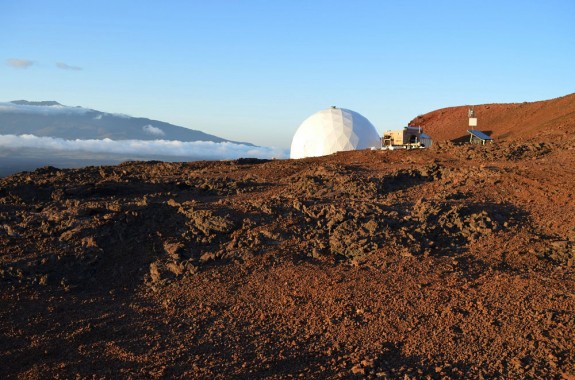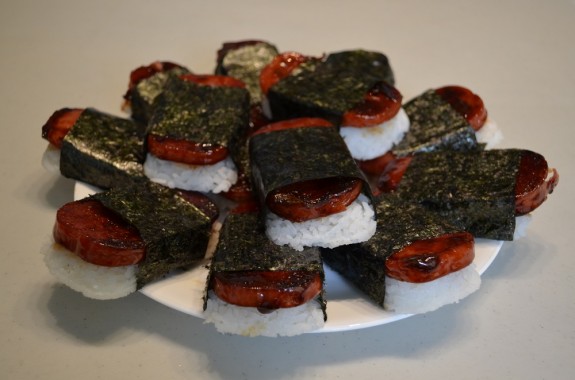These Scientists Just Spent Four Months Pretending They Were on Mars
And they ate a lot of Spam

The HI-SEAS dome. Photo: Sian / HI-SEAS
One hundred and twenty-one days ago six people, including science journalist Kate Greene, shut the door to their new home, a 1,300 square foot dome on the slopes of Hawaii’s Mauna Loa volcano. They were there to try to understand what life would be like living in a small colony on the surface of Mars. Their main goal of their mission, HI-SEAS, was to figure out how to feed people on such a long journey to a remote location.
Yesterday, the team emerged from their home “with their recipes and without the space suits they were required to wear each time they ventured onto the northern slope of Mauna Loa” says the Canadian Press.
Greene chronicled her adventures in HI-SEAS for Discover Magazine, including this Day-in-the-Life photo essay:
The other crew members kept their own blogs, too.
The Canadian Press:
The six researchers were selected by the University of Hawaii and Cornell University for the NASA-funded study to prepare meals from a list of dehydrated, preserved foods that are not perishable. They examined pre-prepared meals similar to what astronauts currently eat, and concocted meals themselves in an attempt to combat malnourishment and food boredom.
So what did they come up with? Spam. A lot of Spam. And lots of interesting ways to use Spam. “The researchers prepared several dishes using Spam, including a Cajun jambalaya and a fried rice noodle dish,” says the CP.

Spam sushi. Photo: Sian / HI-SEAS
The struggle was trying to come up with how to build varied recipes from a set list of ingredients which include a lot of canned, dried and frozen things, and very few perishables. NPR:
NASA makes an excellent apricot cobbler and a sweet and sour pork in ready-to-eat pouches, says Jean Hunter, a food engineer at Cornell. But “on a planetary surface mission, the timeframe is long enough that the astronauts will have time to get tired of their menu, no matter how good it is,” she tells The Salt.
More from Smithsonian.com:
Solar System Lollipops And Other Food That Looks Like Things
Unpack a Meal of Astronaut Space Food
/https://tf-cmsv2-smithsonianmag-media.s3.amazonaws.com/accounts/headshot/smartnews-colin-schultz-240.jpg)


/https://tf-cmsv2-smithsonianmag-media.s3.amazonaws.com/accounts/headshot/smartnews-colin-schultz-240.jpg)